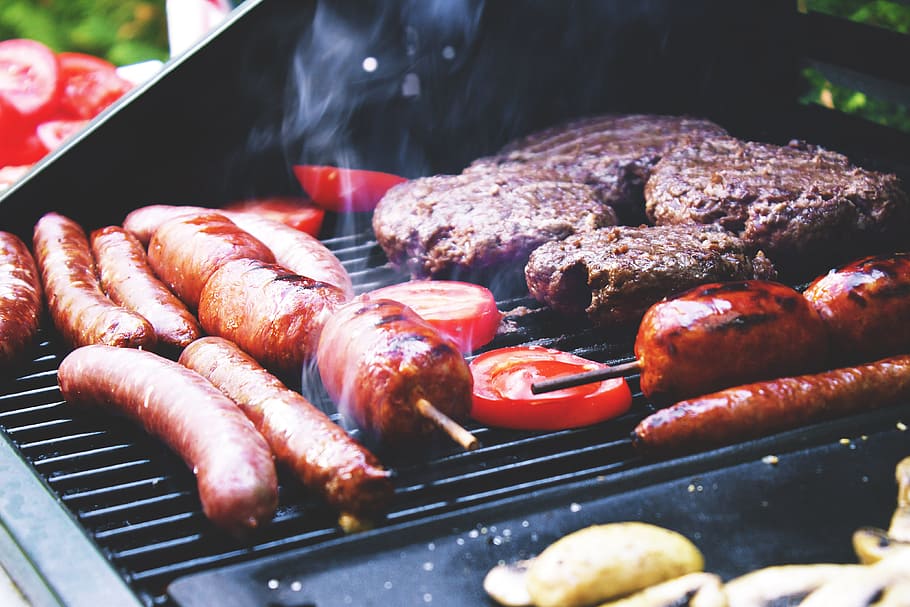
Memorial Day weekend is the official kickoff for summer, and as the weather heats up, so do the number of meals that will be served outside. Whether you’re eating with friends at the pool or family in a backyard cookout, food should be served safe to avoid foodborne illness. As you start to plan your outdoor activities and meals, the U.S. Department of Agriculture’s (USDA) Food Safety and Inspection Service is offering food safety tips to keep you safe from foodborne illness.
“The bacteria that cause foodborne illness love the summertime as much as we do because they thrive and multiply quickly in warmer temperatures. This causes illnesses to spike during the summer,” said Under Secretary for Food Safety Dr. Emilio Esteban. “As we all spend more time outside, it is important to remember these food safety steps to keep your friends and family safe.”
Wash Hands
The first step to serving summer foods safely is to start with clean hands. If running water is available, wet hands, lather with soap, scrub for 20 seconds, rinse and dry. If no running water is available, use hand sanitizer or moist towelettes that contain at least 60 percent alcohol.
Pack Perishables Safely
When traveling with perishable food to places like the pool, beach, summer camp, hiking, or a cookout, always use cold sources in coolers or insulated containers to keep food at a safe cold temperature below 40 F. Cold source options include ice, frozen gel packs, and frozen beverages (that do not require refrigeration for safety) such as water bottles, iced tea, and juices like apple and grape. Additional cooler tips:
- Pack beverages in one cooler and perishable food in another cooler.
- The beverage cooler may be opened frequently, causing the temperature inside the cooler to fluctuate and become unsafe for perishable foods.
- Keep coolers and insulated bags out of the sun. Once outside, place them in the shade.
- Full coolers or insulated bags will keep your perishable foods cold and safe for much longer than half-full ones.
- Place an appliance thermometer (one traditionally used for the refrigerator or freezer) in the cooler so you can check to be sure the food stays at 40 F or below.
Keep Out of the Danger Zone
The Danger Zone is the temperature range where bacteria multiply rapidly between 40 and 140 F. Perishable foods, including meat and poultry, sliced fruits and vegetables, and cooked side dishes, should avoid the Danger Zone or be kept hot or cold to maintain food safety.
- Cold foods must be kept at 40 F or below by placing them in the refrigerator, coolers, insulated containers, or nestled over ice.
- Hot foods must be kept over 140 F by placing them on the grill, in heated chafing dishes, slow cooker, or warming trays.
Check the temperatures of cold and hot items frequently.
Follow the Two-Hour Rule
Foods that are kept hot or cold out of the Danger Zone or do not sit out for more than two hours (one hour if over 90 F) are safe to keep. Any other items would be considered unsafe and need to be discarded. When in doubt, throw it out!
If You Have Food Safety Questions
Call the USDA Meat and Poultry Hotline at 1-888-MPHotline (1-888-674-6854), email MPHotline@usda.gov or chat live at www.ask.usda.gov 10 a.m. to 6 p.m. Eastern Time, Monday through Friday.
Access news releases and other information at USDA’s Food Safety and Inspection Service’s (FSIS) website at www.fsis.usda.gov/newsroom. Follow FSIS on X at @usdafoodsafety or in Spanish at X @usdafoodsafety_es, and USDA on Instagram at @usdagov and Facebook.
USDA


Bulloch Public Safety
Several Arrested in Bulloch for Narcotics Trafficking After Citizen Complaints

Bulloch Public Safety
12/19/2025 Booking Report for Bulloch County

Chattooga Local News
Trump signs executive order reclassifing marijuana

Bulloch Public Safety
12/18/2025 Booking Report for Bulloch County

Bulloch Public Safety
11/24/2025 Booking Report for Bulloch County

Bulloch Public Safety
12/12/2025 Booking Report for Bulloch County

Bulloch Public Safety
12/01/2025 Booking Report for Bulloch County

Bulloch Public Safety
12/16/2025 Booking Report for Bulloch County

Bulloch Public Safety
12/11/2025 Booking Report for Bulloch County





